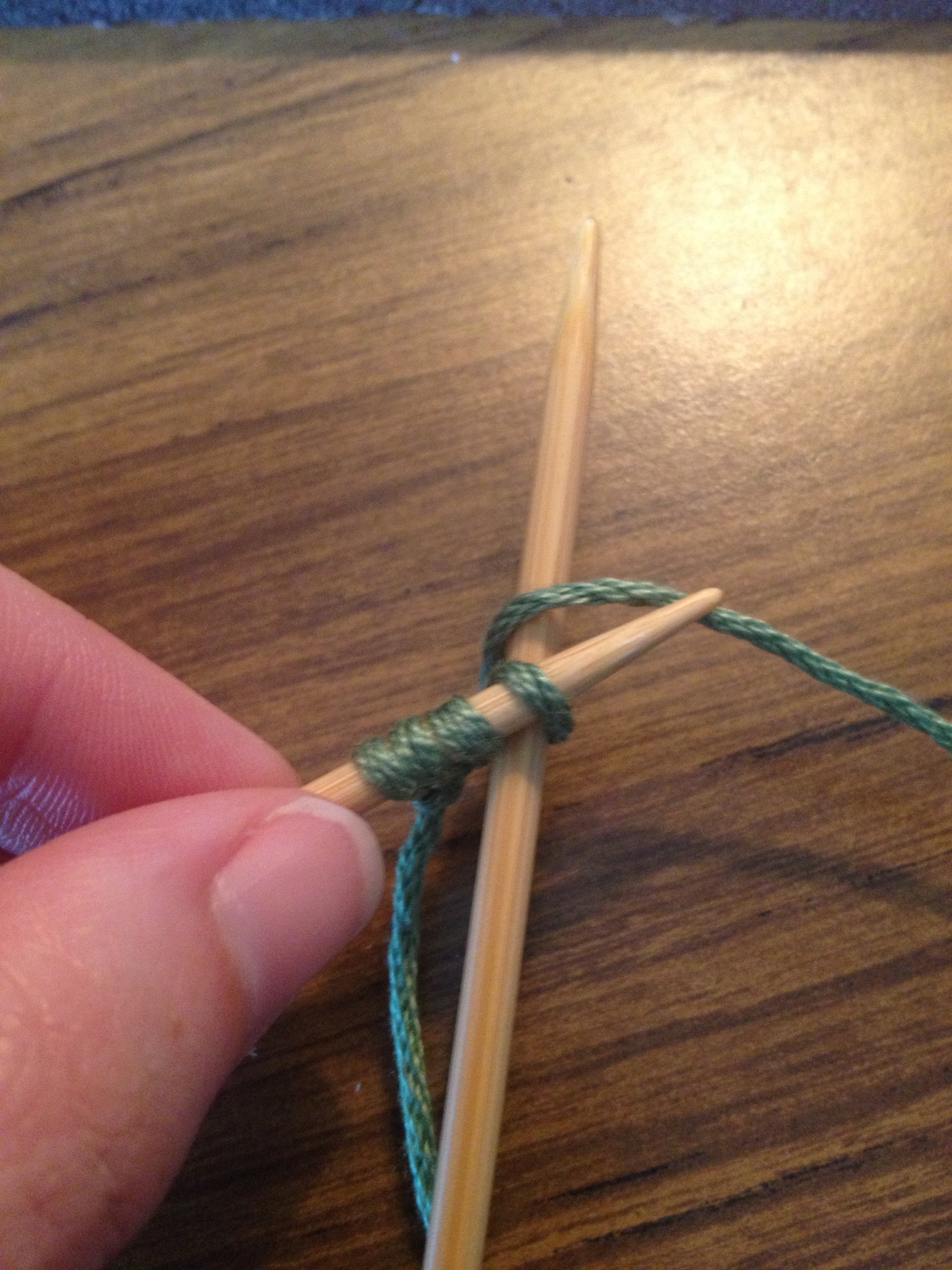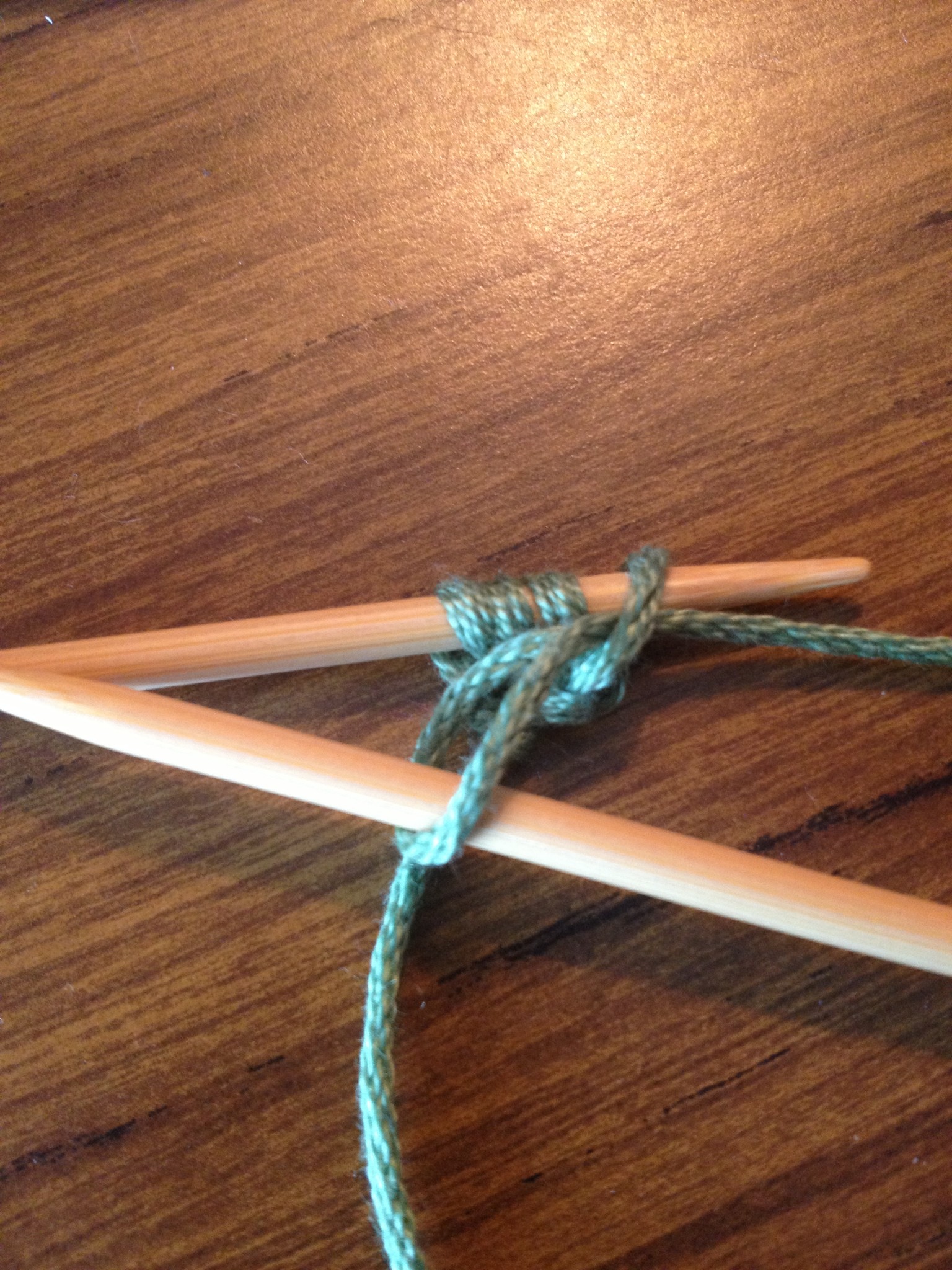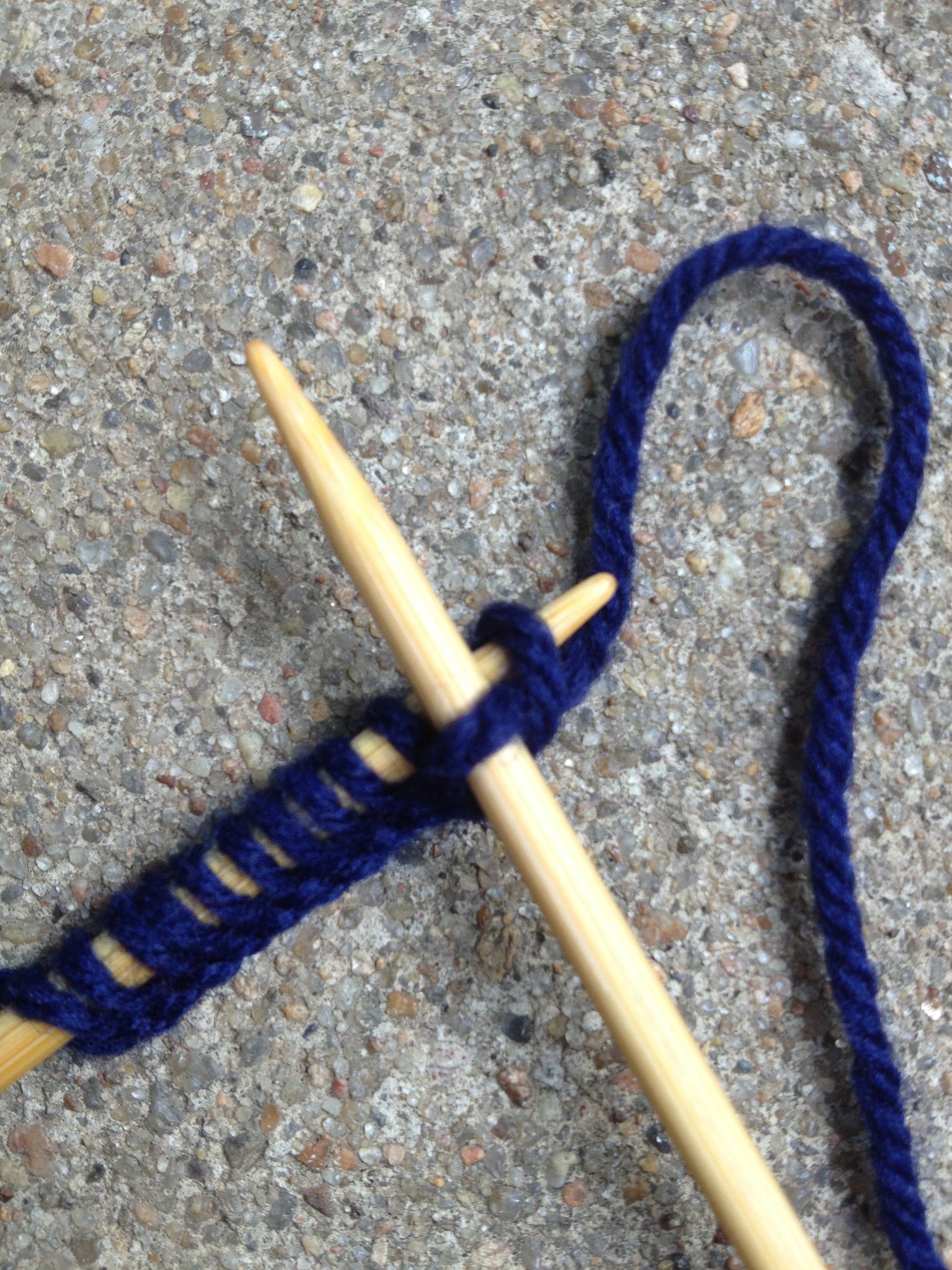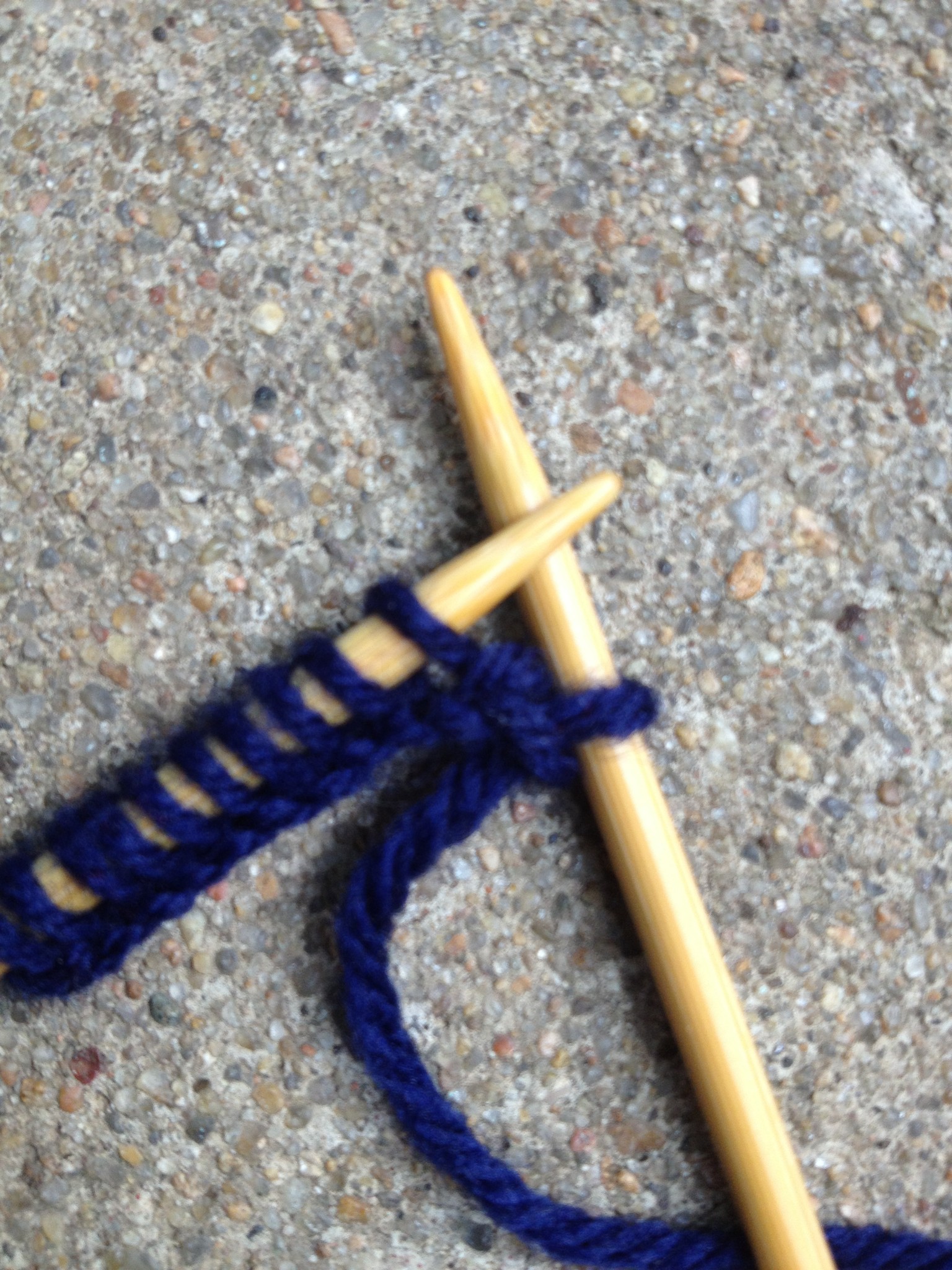So you want to learn to knit, eh? Well, you have come to the right place. I’m here to get you started (and keep you going)!
Knitting is a fabulous hobby and it’s cool again, so there’s no better time to learn. All you need to get started is two needles and a ball of yarn. I recommend bamboo needles for beginners because I find them to be the easiest to work with. Metal and plastic needles can be a little slippery, which can pose problems for newbies if stitches slide off.
For your first yarn, pick something cheap and easy, like a basic worsted wool.
The first step to knitting is casting on.
This is the term for getting that first row of stitches on to your needle. There are numerous ways to do this, but for beginners, I like to teach the knit cast-on. I have taught many friends to knit. Inevitably, as they learn to knit, they get very good at the knit stitch. But by the time they are ready to start a new project, they’ve forgotten how to cast-on again. So I teach the knit cast-on because it’s so similar to the knit stitch, with just one twist.
Step 1: Start with a slip knot and put the loop on your left needle. Now insert the right needle into that loop from the front to the back and wrap your yarn around the back of the right needle.


Step 2: Then pull the right needle back out, bringing that yarn loop with it.

Step 3: Put the tip of the left needle under that loop and slip the loop on to the needle and off the right needle.

Step 4: Remove the right needle and pull the stitch taut. You should now have two stitches on your left needle.
Keep doing this until you have as many stitches as you want. For your first-ever swatch, I recommend starting with about 20 stitches, but remember, this isn’t likely to turn into anything. This is just for practice.
After casting on, you are ready to start knitting.
Step 5: The knit stitch starts exactly like this cast-on (again, that’s why I teach this cast-on). Insert your right-hand needle into the first stitch on the left needle and wrap the yarn around the right needle. Pull the right needle back out, bringing the new yarn loop with it.

Step 6: This time, you will leave the new stitch on the right needle and slide the stitch you just knit into off the left needle (that loop on the tip of the needle). It may seem scary to let a stitch slip off, but it will be OK.

See? You’ve just completed your first official knit stitch!
When learning to knit, the most common mistake people make is not sliding the stitch they’ve just worked off the left needle. Instead, they work that stitch again, which increases the total number of stitches.
At the end of your row, you will switch your needles so the one that has all the stitches on it will now be the left needle. Work on the knit stitch over and over until you get comfortable with it and are creating stitches that are relatively even.
It’s common for a first swatch to be a little wonky and wider at one end than the other. As you improve, your stitches will even out.
When you’ve mastered the knit stitch, come back to start learning the other basic stitch: the purl. Then we’ll talk about how to cast-off your project.
To learn more knitting essentials, enroll in Startup Library: Knitting with Susan Anderson. She covers all the basics, including casting on, binding off and purling, how to read a knitting pattern, and how to increase and decrease stitches. You may also enjoy our post on knitting fundamentals. And be sure to come back to the blog tomorrow to learn all about the garter stitch. We’ll share some great patterns for beginners!

Need Puppy by Sara Gasson